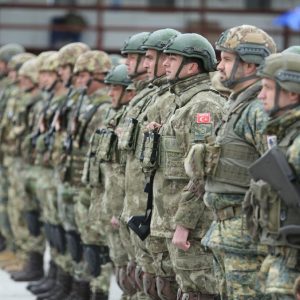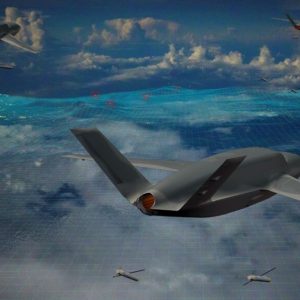
Aircraft backlogs, China’s entry into the single‑aisle market and shifting Gulf strategies will shape Dubai Airshow Western jet orders this year. The event has become a stress test for Airbus and Boeing as they try to convert massive demand into firm, deliverable business.
Key facts
- Around 300 commercial aircraft orders are expected at Dubai, roughly half of peak years.
- Airbus aims to close the order gap with Boeing, led by wide‑body campaigns at Emirates and Etihad.
- China’s COMAC C919 appears at Dubai for the first time outside Asia, targeting Middle East and Africa carriers.
- Defence interest centres on U.S. F‑35 access, Russia’s Su‑57E debut and deeper cooperation between EDGE and U.S. startups.
Airbus chases momentum as Boeing manages delays
For Airbus, Dubai arrives at a convenient moment. The European manufacturer trails Boeing in this year’s order race, yet demand for new capacity remains strong. The show offers a public stage to rebalance that scoreboard.
Industry sources expect Emirates to anchor the week with fresh A350‑1000 commitments. Those jets would extend the airline’s flexibility on long‑haul routes while easing reliance on ageing A380s. At the same time, Abu Dhabi‑based Etihad is lining up additional Airbus wide‑bodies to support its own growth plan.
Flydubai may provide the real shock. The low‑cost carrier has long been a Boeing stronghold, built around the 737 family. Now its leadership is weighing a split order that would bring Airbus into the fleet for the first time and reduce exposure to a single supplier.
Such a decision would echo a wider trend. Airlines that once prided themselves on single‑type fleets now prioritise resilience, access to slots and leverage in negotiations. A balanced order book helps on each front.
Boeing enters the show with a larger backlog and a strong 737 MAX pipeline. However, the manufacturer still wrestles with repeated schedule slips on the 777X, now around seven years late. Gulf customers remember the fanfare of the jet’s launch in Dubai a decade ago, and patience has limits.
Because of these constraints, analysts expect Dubai’s total order count to land near 300 aircraft, about half of the volumes seen during earlier boom cycles. Demand is not the problem; production rates, engine availability and certification bandwidth all act as hard ceilings.
Gulf hubs protect their role in the global network
Dubai Airshow also coincides with the 40th anniversary of Emirates. Over four decades, the airline turned the Gulf into a central interchange for long‑haul travel, pulling traffic away from traditional European hubs. That model now faces sharper competition.
Turkey’s airlines push Istanbul as a rival super‑hub. India backs Air India with record orders to capture flows between Europe, Asia and North America. Meanwhile, Saudi Arabia funds an ambitious aviation strategy built around Riyadh Air and a revitalised Saudia.
As a result, Gulf carriers can no longer rely on geography alone. They need new fleets, sharper connectivity and more diversified revenue streams to defend their position. Wide‑body orders at Dubai are therefore as much about network strategy as they are about aircraft economics.
So far, passenger demand has proven resilient. Long‑haul travel recovered faster than many forecasters assumed, and premium cabins remain surprisingly strong. Yet the same strength keeps pressure on airlines to add capacity despite supply chain friction.
China’s C919 makes its pitch to Gulf decision‑makers
Beyond the Airbus‑Boeing duel, Dubai introduces a new storyline. China’s COMAC brings the C919 narrow‑body to its first major show outside Asia, hoping to impress airlines from the Middle East and Africa and to chip away at Western dominance of the single‑aisle market.
The aircraft targets the same segment as the Boeing 737 and Airbus A320neo. On paper, its performance sits broadly in the same band. For many buyers, however, the decisive questions concern certification, lifecycle support and political risk rather than raw specifications.
Western regulators have yet to approve the C919. Until that happens, the jet will remain largely confined to Chinese and friendly markets. Even so, its presence in Dubai signals Beijing’s intent to court Gulf partners and to weave aviation into wider economic ties across the region.
From an airline perspective, the C919 could someday offer useful bargaining power. A credible third option in single‑aisle jets would give carriers extra leverage when negotiating pricing, support packages and delivery slots with Airbus and Boeing.
For now, most Gulf operators will treat the type as a long‑term prospect rather than an imminent fleet choice. They will watch its in‑service record in China, gauge how quickly COMAC can scale production and study whether international lessors embrace the programme.
Defence and fighter interest keep Dubai in the spotlight
Dubai Airshow remains a major shop window for the arms industry, even if large defence deals rarely close during the week itself. This year, attention clusters around advanced fighters, integrated air defence and uncrewed systems.
Washington’s long‑running debate over transferring F‑35s to regional partners again surfaces in the background. Progress on a potential Saudi order for dozens of jets would send a strong signal about U.S. thinking on technology release and alliance commitments in the Gulf.
Neighbouring states, including the UAE and Qatar, have previously explored F‑35 access without reaching signature. If Riyadh moves closer to a deal, those governments will reassess their own options and timelines.
Russia, for its part, uses Dubai to pitch the export‑configured Su‑57E stealth fighter. The platform still lacks a long export track record, yet Moscow hopes visibility at a premier Middle Eastern show can spark interest among states seeking alternatives to U.S. or European hardware.
Meanwhile, defence‑technology startups treat Dubai as a gateway to capital and operational testbeds. U.S. firm Anduril and Abu Dhabi’s EDGE Group have already announced joint work on advanced drones, blending rapid software development with regional manufacturing capacity. Their partnership underlines how the Gulf now serves as a laboratory for next‑generation airpower concepts, not only a customer base.
What to watch as Dubai Airshow opens
The 2025 edition of Dubai Airshow arrives at a moment when aviation demand is high but industrial bandwidth remains tight. Every new order announcement will therefore raise the same question: can manufacturers actually deliver on time?
Observers should track how many wide‑body deals move beyond tentative discussions into firm contracts. They should also watch whether flydubai breaks with its single‑manufacturer past and whether other carriers follow with their own split‑fleet strategies.
On the strategic side, the presence of the C919, the ongoing F‑35 debate and the Su‑57E debut together illustrate a broader shift. Airpower is no longer a simple binary contest between Western suppliers. Instead, a more complex, multi‑polar marketplace is emerging, where capability, politics and industrial resilience all carry equal weight.
For Defence Agenda readers, Dubai Airshow Western jet orders tell a larger story. They show how commercial backlogs, rising regional competitors and new defence technologies now intersect in one event. The show has become a barometer for the balance of power in both civil and military aviation.











